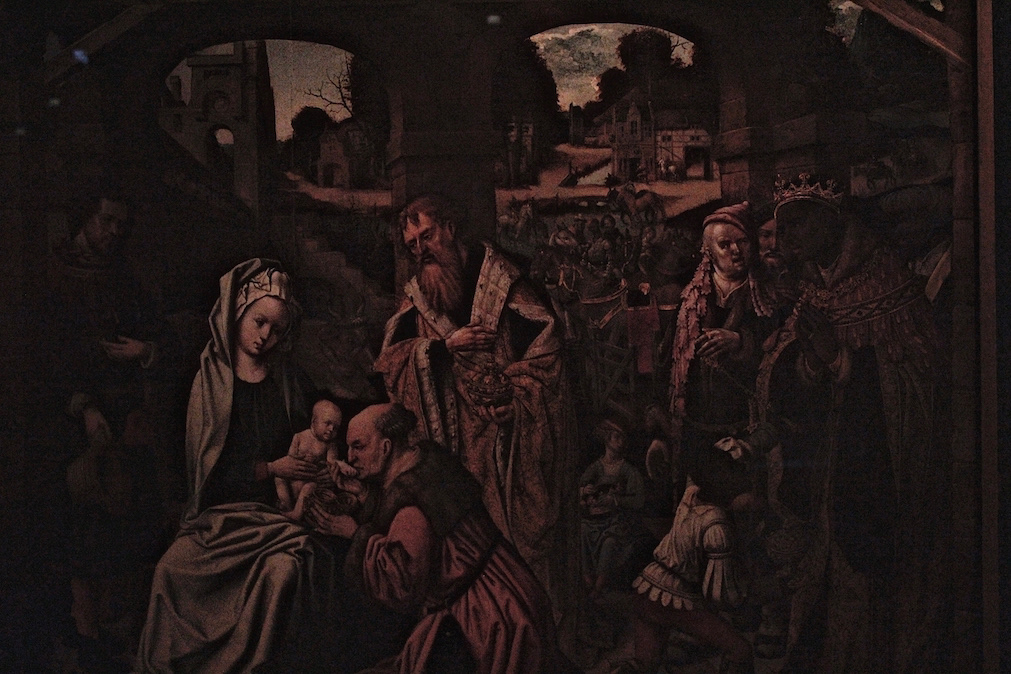
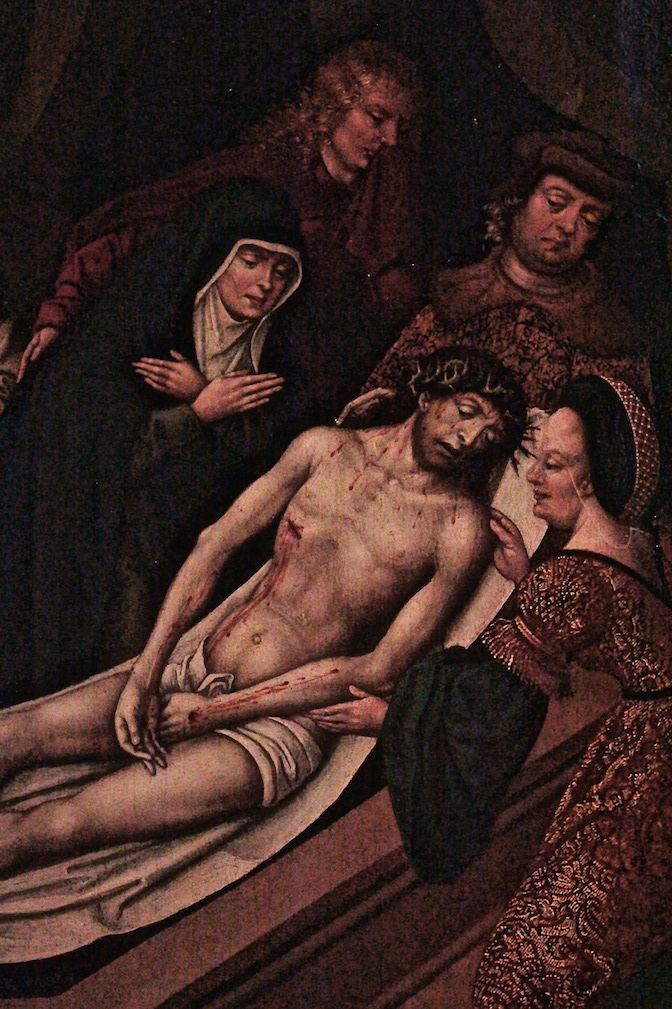



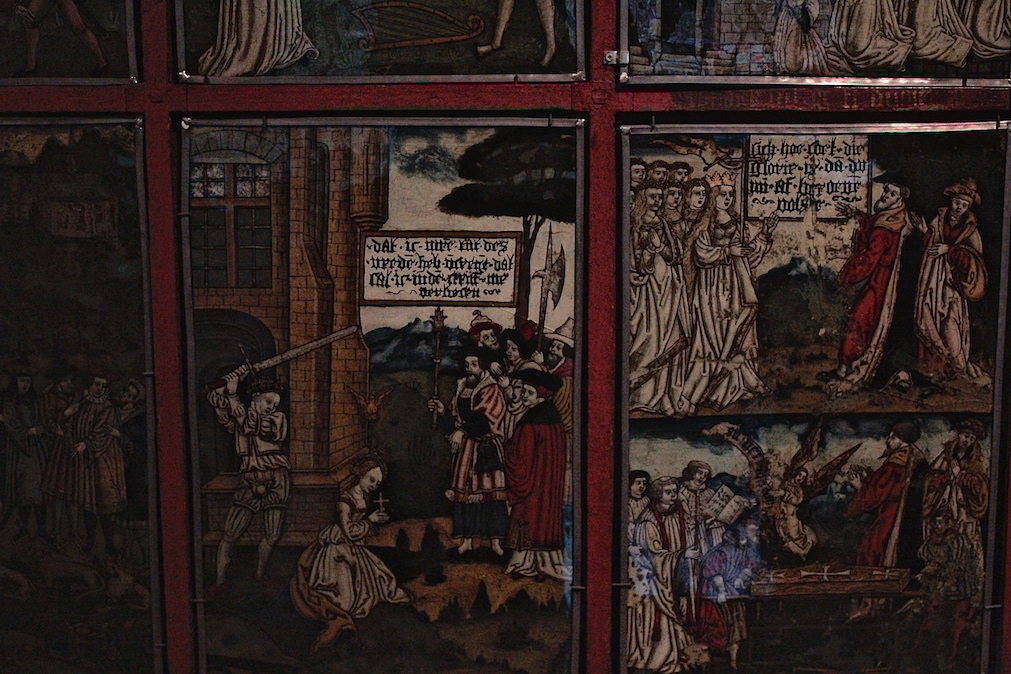
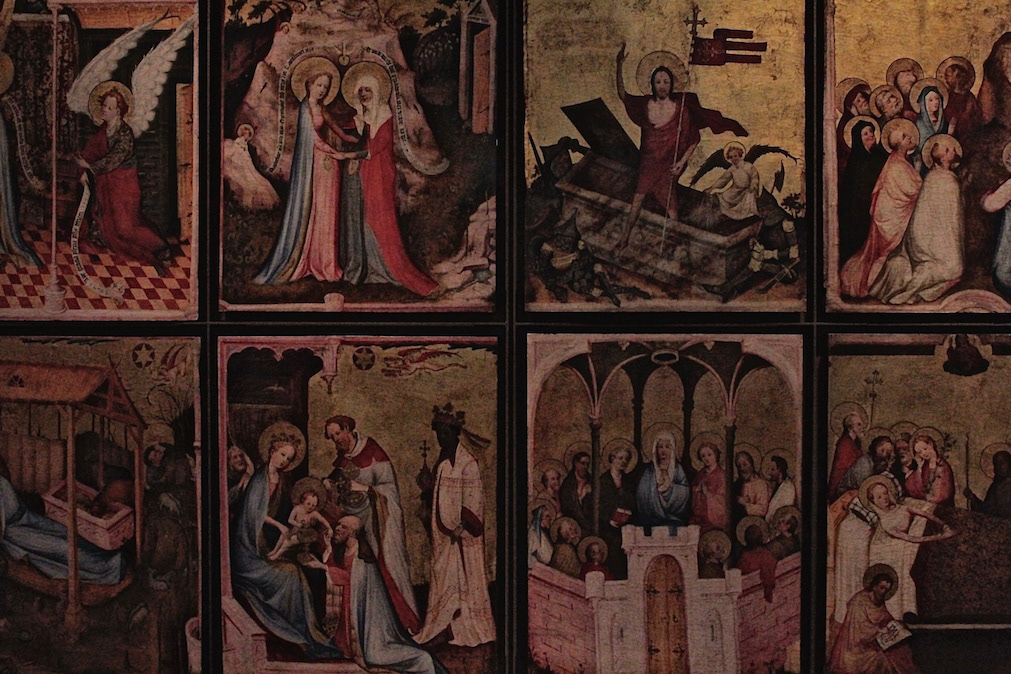
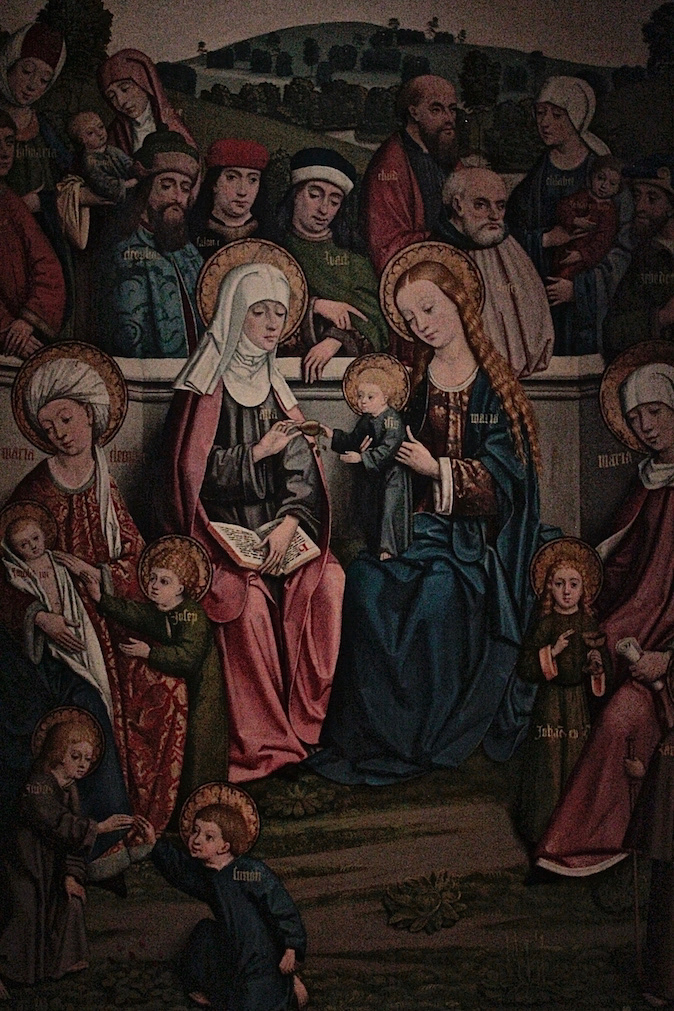
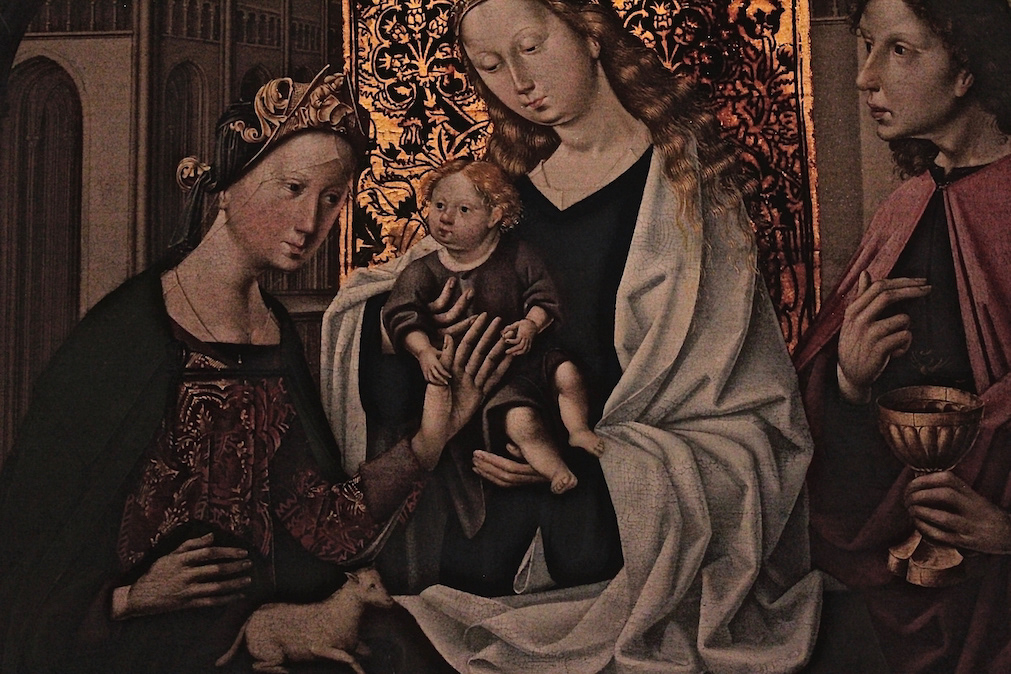



Images produced without manipulation (DSLR Camera, Canon). These are some of the pictures I took at the Catharijneconvent Museum in 2014. Walking in spaces like this is for me a kind of pilgrimage (in the sense explained by Proust/Ruskin). But I didn't have a script. I photographed only what truly affected my senses, without looking for titles and authors. Colour, darkness and contrast, as well as texture are important (I want an effect which reveals the forces behind/throughout the image). A framework sometimes is underlined instead of obliterated (as a parergon, in Derridean sense).
This isn't any academic, instructive exercise, quite on the contrary. The images should "speak" by themselves. The truth is in their auras, even if the aura is lost, when it is lost—don't you have an answering service? This is also an attempt to release the images from all the discursive networks that supposedly support them as officially sanctioned cultural artefacts (and if these networks were not official, my intention would be the same). The images should haunt us to the extent that we fail to name them, as dream impressions or memory failures.
Useful quotation:
"Dans l'Italie du Quatrocento et de la Renaissance, l'anthropomorphie du démon est la règle; comme dans la France romane. Ce fait n'a échappé à aucun démonologue (sérieux) mais s'explique sans doute par l'humanisme tutélaire de ces régions, alors que les peuples nordiques semblent davantage de plain-pied avec les forces secrètes de la nature: songes de l'eau et du limon engendrant une zoomorphie triomphante... Prolifération génitale, avidité gastrique, surexcitation de tous les sens. Surgissant de toutes parts: un tohu-bohu de goinfres et de luxurieux, à la peau écaillée, velue ou pustuleuse, aux regards de boue et de sang... Moralité des Tentations: le saint parfaitement immobile, aux prises avec l'horrible, sous une pluie de coups. Ceci rejoing une recette du Taoïsme: le non-agir... Le démoniaque en Extrême-Orient. Tentations, enfers chinois, japonais, tibétains. C'est dans cette expression qu'Européens et Asiatiques se ressemblent le plus" (André Masson, Le Jardin des Délices/Écrits, anthologie établie par Françoise Levaillant).
The works photographed here include:
***Burial (Jan Baegert/2nd quart of the 16th century, Oil paint on panel/49x33cm);
***Christ as the man of sorrows, Many part with the martyrdom of Saint Theodosia (Gelderland/1545, Oil paint on panel);
***Decapitation of Theodosia, Many part with the martyrdom of Saint Theodosia (Gelderland/1545, Back glass painting);
***Scenes from a side panel and altarpiece (Cologne, Middle Rhine or Westphalia/ca.1410, Tempera on panel);
***Holy Virgin (from the panel of an altarpiece) (Meester van Liesborn/1480, Oil paint on panel/143x105cm);
***Mystical marriage of Saint Agnes (North Neetherlands, Utrecth/1475, Oil paint on panel 32x45cm);
***Marriage of Maria and Joseph (Meester van Sint-Goedele/ca. 1485, Oil paint on panel/58x42cm);
***Joseph fleeing from the wife of Potiphar (Pieter Coecke van Aelst/2nd quart of the 16th century, Oil paint on panel/58x93cm);
